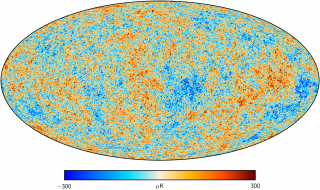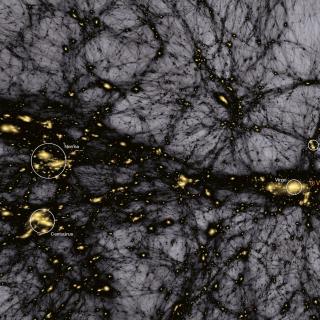Bibcode
Zacchei, A.; Zonca, A.; White, S. D. M.; Yvon, D.; Vittorio, N.; Wade, L. A.; Wandelt, B. D.; Welikala, N.; Van Tent, B.; Vielva, P.; Villa, F.; Tristram, M.; Tucci, M.; Valenziano, L.; Terenzi, L.; Toffolatti, L.; Tomasi, M.; Suur-Uski, A.-S.; Sygnet, J.-F.; Tauber, J. A.; Sudiwala, R.; Sunyaev, R.; Sutton, D.; Scott, D.; Smoot, G. F.; Starck, J.-L.; Sandri, M.; Savini, G.; Schaefer, B. M.; Rossetti, M.; Rubiño-Martín, J. A.; Rusholme, B.; Rocha, G.; Roman, M.; Rosset, C.; Ricciardi, S.; Riller, T.; Ristorcelli, I.; Reinecke, M.; Remazeilles, M.; Renault, C.; Rachen, J. P.; Rebolo, R.; Prunet, S.; Puget, J.-L.; Poutanen, T.; Pratt, G. W.; Ponthieu, N.; Popa, L.; Piffaretti, R.; Plaszczynski, S.; Pointecouteau, E.; Polenta, G.; Piacentini, F.; Piat, M.; Pierpaoli, E.; Perdereau, O.; Perotto, L.; Perrotta, F.; Paoletti, D.; Pasian, F.; Patanchon, G.; Novikov, D.; Novikov, I.; Osborne, S.; Pajot, F.; Nørgaard-Nielsen, H. U.; Noviello, F.; Nati, F.; Natoli, P.; Munshi, D.; Murphy, J. A.; Naselsky, P.; Montier, L.; Morgante, G.; Miville-Deschènes, M.-A.; Moneti, A.; Mennella, A.; Mitra, S.; Melin, J.-B.; Mendes, L.; Matthai, F.; Mazzotta, P.; Mei, S.; Melchiorri, A.; Massardi, M.; Matarrese, S.; Marshall, D. J.; Martínez-González, E.; Masi, S.; Maffei, B.; Maino, D.; Mandolesi, N.; Maris, M.; Marleau, F.; Lubin, P. M.; Luzzi, G.; Macías-Pérez, J. F.; Linden-Vørnle, M.; López-Caniego, M. et al.
Referencia bibliográfica
Astronomy and Astrophysics, Volume 550, id.A134, 16 pp.
Fecha de publicación:
2
2013
Revista
Número de citas
110
Número de citas referidas
108
Descripción
Context. About half of the baryons of the Universe are expected to be in
the form of filaments of hot and low-density intergalactic medium. Most
of these baryons remain undetected even by the most advanced X-ray
observatories, which are limited in sensitivity to the diffuse
low-density medium. Aims: The Planck satellite has provided
hundreds of detections of the hot gas in clusters of galaxies via the
thermal Sunyaev-Zel'dovich (tSZ) effect and is an ideal instrument for
studying extended low-density media through the tSZ effect. In this
paper we use the Planck data to search for signatures of a fraction of
these missing baryons between pairs of galaxy clusters. Methods:
Cluster pairs are good candidates for searching for the hotter and
denser phase of the intergalactic medium (which is more easily observed
through the SZ effect). Using an X-ray catalogue of clusters and the
Planck data, we selected physical pairs of clusters as candidates. Using
the Planck data, we constructed a local map of the tSZ effect centred on
each pair of galaxy clusters. ROSAT data were used to construct X-ray
maps of these pairs. After modelling and subtracting the tSZ effect and
X-ray emission for each cluster in the pair, we studied the residuals on
both the SZ and X-ray maps. Results: For the merging cluster pair
A399-A401 we observe a significant tSZ effect signal in the intercluster
region beyond the virial radii of the clusters. A joint X-ray SZ
analysis allows us to constrain the temperature and density of this
intercluster medium. We obtain a temperature of kT = 7.1 ± 0.9
keV (consistent with previous estimates) and a baryon density of (3.7
± 0.2) × 10-4 cm-3.
Conclusions: The Planck satellite mission has provided the first SZ
detection of the hot and diffuse intercluster gas.
Proyectos relacionados

Anisotropía del Fondo Cósmico de Microondas
El objetivo general de este proyecto es determinar y estudiar las variaciones espaciales y espectrales en la temperatura del Fondo Cósmico de Microondas y en su Polarización en un amplio rango de escalas angulares que van desde pocos minutos de arco hasta varios grados. Las fluctuaciones primordiales en la densidad de materia, que dieron origen a
Rafael
Rebolo López

Cosmología con Trazadores de la Estructura a Gran Escala del Universo
El Fondo Cósmico de Microondas (FCM) contiene la información estadística de las semillas primigenias que han dado lugar a la formación de todas las estructuras en el Universo. Su contrapartida natural en el Universo local es la distribución de las galaxias que surgen como resultado del crecimiento gravitatorio de aquellas fluctuaciones de densidad
FRANCISCO SHU
KITAURA JOYANES